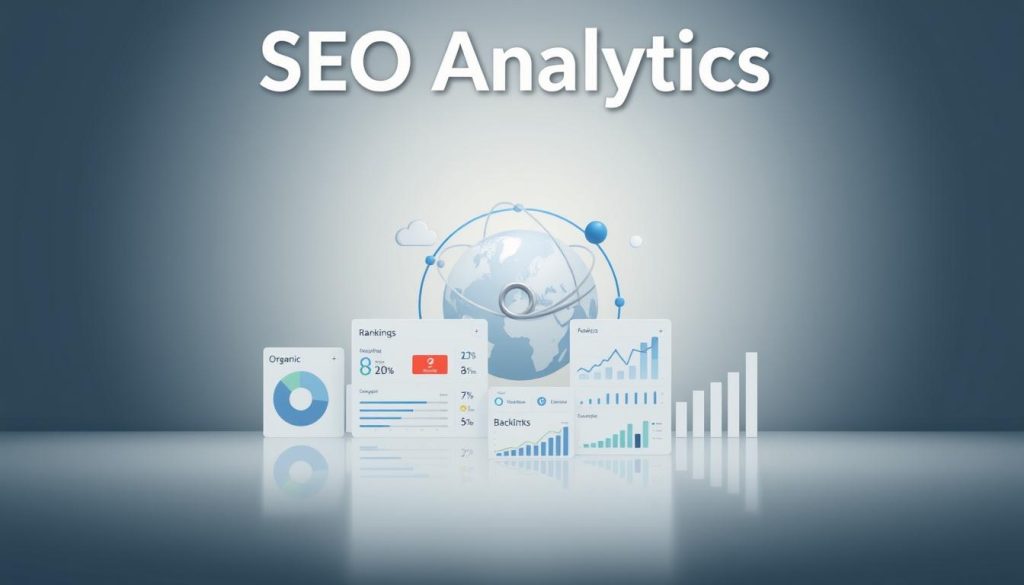Are you struggling to make your brand heard in the crowded digital landscape? Is your current approach to digital marketing yielding the desired results?
A well-optimized content strategy is crucial for achieving success in today’s competitive online environment. Effective content planning enables businesses to connect with their target audience, drive engagement, and ultimately boost conversions.
By focusing on a tailored digital content approach, you can differentiate your brand and maximize your online presence. In this article, we will explore the key elements of a successful content strategy and provide actionable tips to enhance your digital marketing efforts.
Key Takeaways
Table of Contents
- Understanding the importance of a well-optimized content strategy
- Identifying the key elements of effective content planning
- Learning how to create a tailored digital content approach
- Discovering actionable tips to enhance digital marketing efforts
- Maximizing online presence through a successful content strategy
The Power of Strategic Content Planning
The digital age has underscored the importance of a robust content strategy in capturing and retaining audience attention. As businesses navigate the complexities of digital marketing, a well-planned content strategy emerges as a crucial element for success.
Why Content Strategy Matters in 2023
In 2023, a digital marketing strategy that incorporates high-quality, relevant content is vital for driving engagement and conversions. A well-crafted content strategy helps businesses connect with their target audience, build brand awareness, and stay ahead of the competition.
The Impact of Quality Content on Website Traffic
Quality content plays a significant role in determining website traffic. By creating informative, engaging content, businesses can attract and retain visitors, ultimately driving more traffic to their website. This, in turn, can lead to increased conversions and revenue.
Conducting Effective Keyword Research
Conducting keyword research is a fundamental step in developing an effective SEO plan. It involves identifying the terms and phrases your target audience uses to search for content like yours.
Tools for Identifying High-Value Keywords
Several tools can help you identify high-value keywords. Google Keyword Planner is a popular choice, offering insights into search volume and competition. Ahrefs and SEMrush are other powerful tools that provide detailed keyword analysis and competitor insights.
| Tool | Features | Usefulness |
|---|---|---|
| Google Keyword Planner | Search volume, competition analysis | High |
| Ahrefs | Keyword analysis, competitor insights | Very High |
| SEMrush | Technical SEO audits, competitor analysis | Very High |
Analyzing Competitor Keyword Strategies
Understanding what keywords your competitors are targeting can provide valuable insights. Analyze their content and identify gaps in their strategy that you can exploit. Tools like Ahrefs and SEMrush can help you analyze competitor keyword strategies.

Implementing Keyword Optimization Techniques
Once you’ve identified your target keywords, it’s time to optimize your content. This involves incorporating your keywords naturally into your content, including in the title, meta description, and headings.
Long-tail Keywords vs. Short-tail Keywords
Long-tail keywords are more specific phrases with lower search volumes, while short-tail keywords are broader and more competitive. Targeting a mix of both can help you capture a wider audience.
Keyword Placement Best Practices
Place your keywords strategically in your content, including in the first paragraph, subheadings, and meta description. Avoid keyword stuffing, as it can lead to penalties from search engines.
Building a Comprehensive Content Strategy Framework
Building a robust content strategy framework is essential for businesses aiming to enhance their online presence. A comprehensive framework ensures that all content marketing efforts are aligned with the overall business goals, thereby maximizing the return on investment.
Setting Clear Content Goals and KPIs
To develop an effective content strategy, it’s crucial to set clear content goals and Key Performance Indicators (KPIs). These goals should be specific, measurable, achievable, relevant, and time-bound (SMART). For instance, increasing website traffic by 20% within the next 6 months is a SMART goal. KPIs such as page views, engagement metrics, and conversion rates will help measure progress toward this goal.
Creating an Effective Content Calendar
A content calendar is a vital tool for organizing and scheduling content in advance. It helps in maintaining consistency and ensuring that content is distributed across various channels. When creating a content calendar, consider key dates, events, and trends relevant to your industry. This will help in planning content that resonates with your audience and stays relevant.
Aligning Content with Your Audience Targeting
Aligning your content with your target audience is critical for its success. This involves understanding your audience’s needs, preferences, and pain points. Developing buyer personas is a key step in this process.
Developing Buyer Personas
Buyer personas are detailed profiles of your ideal customers. They include demographic information, job roles, challenges, and behavioral traits. Creating these personas helps in tailoring content that addresses the specific needs of your target audience.
Mapping Content to the Customer Journey
Mapping content to the customer journey involves creating content that caters to the different stages a customer goes through, from awareness to conversion. For example, blog posts and social media content can be used to create awareness, while case studies and whitepapers can help in the consideration stage.
By following these steps, businesses can build a comprehensive content strategy framework that not only enhances their online presence but also drives meaningful engagement with their target audience.
Creating SEO-Optimized Digital Content
Crafting SEO-optimized digital content is a nuanced art that requires a deep understanding of search engine algorithms and user behavior. In today’s digital landscape, having a well-thought-out content strategy is crucial for businesses aiming to enhance their online presence.
On-Page SEO Best Practices
On-page SEO is fundamental to ensuring that your website content is both crawlable and indexable by search engines. Best practices include optimizing title tags, meta descriptions, and header tags, as well as using descriptive alt text for images. By implementing these strategies, you can significantly improve your website’s visibility in search engine results.

Crafting Engaging Headlines and Meta Descriptions
Crafting engaging headlines and meta descriptions is critical for capturing user attention and improving click-through rates. A well-written headline should be informative, yet enticing, encouraging users to click through to your content. Similarly, meta descriptions should provide a clear summary of the content, incorporating relevant keywords.
Optimizing Website Content Structure
Optimizing your website’s content structure is vital for both user experience and SEO. This involves organizing content in a logical and accessible manner.
Content Formatting for Readability
Content formatting plays a significant role in readability. Using headings, subheadings, and bullet points can make your content more scannable and easier to digest.
Internal Linking Strategies
Internal linking is a powerful SEO strategy that helps search engines understand your website’s structure and content hierarchy. By linking to relevant and useful content, you can enhance user experience and improve your website’s overall SEO.
By incorporating these strategies into your content creation process, you can develop a robust SEO-optimized digital content strategy that drives engagement and improves your online visibility.
Enhancing User Experience Through Content Marketing
In today’s digital landscape, enhancing user experience is crucial for content marketing success. A well-designed content strategy not only attracts but also retains a clearly defined audience. By focusing on user experience, content marketers can create a more engaging and interactive experience for their target audience.
Designing for Engagement and Retention
Designing content for engagement and retention involves understanding the needs and preferences of your target audience. Interactive elements such as quizzes, polls, and surveys can significantly enhance user engagement. Moreover, using storytelling techniques can make your content more relatable and memorable.
- Use intuitive navigation to help users find what they’re looking for.
- Optimize content for various devices to cater to different user preferences.
- Incorporate feedback mechanisms to understand user needs better.
Mobile Optimization Strategies
With the majority of internet users accessing content through mobile devices, mobile optimization is no longer optional. Ensuring that your content is mobile-friendly involves using responsive design, fast loading speeds, and easy-to-click elements. Accelerated Mobile Pages (AMP) can also improve the mobile user experience by reducing load times.
- Implement responsive design to adapt to different screen sizes.
- Optimize images and videos for faster loading on mobile devices.
- Use mobile-friendly formats for content, such as AMP.
Incorporating Multimedia Elements
Incorporating multimedia elements such as videos, podcasts, and infographics can enhance the user experience by providing diverse ways to consume content. Multimedia elements can also help in explaining complex information in a more engaging manner. Choosing the right multimedia format depends on your audience’s preferences and the nature of your content.
- Use videos to demonstrate products or services.
- Incorporate infographics to present data in a visually appealing way.
- Utilize podcasts for in-depth discussions or interviews.
Measuring and Analyzing SEO Analytics
Analyzing SEO analytics is a critical step in optimizing your content strategy for better search engine rankings. By understanding how your content performs, you can make informed decisions to improve your digital marketing efforts.
Essential Metrics to Track Content Performance
To effectively measure content performance, it’s crucial to track the right metrics. These include organic traffic, bounce rate, and conversion rate. Organic traffic indicates how many visitors are reaching your site through search engines, while bounce rate shows the percentage of visitors who leave your site without taking further action. Conversion rate measures the percentage of visitors who complete a desired action.
| Metric | Description | Importance |
|---|---|---|
| Organic Traffic | Visitors coming from search engines | High |
| Bounce Rate | Percentage of visitors leaving without action | Medium |
| Conversion Rate | Percentage of visitors completing a desired action | High |
Tools for Search Engine Ranking Analysis
Several tools can help you analyze your search engine ranking and content performance. Some of the most popular include Google Analytics, SEMrush, and Ahrefs. These tools provide insights into your website’s traffic, keyword rankings, and backlink profile.
“The key to success is to focus our conscious mind on things we desire not things we fear.” – Bryan Tracy
Iterating Your Digital Marketing Strategy
Once you have analyzed your SEO analytics, it’s essential to iterate your digital marketing strategy based on the insights gained. This involves A/B testing content elements and implementing data-driven improvements.
A/B Testing Content Elements
A/B testing involves comparing two versions of a content element to see which performs better. This could be anything from a headline to a call-to-action button.
Implementing Data-Driven Improvements
By analyzing the results of your A/B tests and other SEO analytics, you can make informed decisions to improve your content strategy. This might involve adjusting your keyword targeting, improving your content’s readability, or enhancing your user experience.

Conclusion: Elevating Your Online Presence Through Strategic Content
A well-crafted content strategy is crucial for businesses aiming to enhance their online presence. By incorporating effective SEO strategies, companies can increase their visibility, drive more traffic to their website, and ultimately boost conversions.
A comprehensive content strategy involves understanding your target audience, creating high-quality content, and optimizing it for search engines. This approach enables businesses to establish a strong online presence, build brand awareness, and stay ahead of the competition.
By implementing the techniques discussed in this article, businesses can develop a robust online presence that drives long-term success. A strategic content strategy, combined with a solid SEO strategy, is essential for achieving digital marketing goals and maximizing online visibility.
FAQ
What is the importance of content strategy in digital marketing?
A well-optimized content strategy is crucial for achieving success in digital marketing as it helps drive website traffic, engage audiences, and ultimately boost conversions.
How does quality content impact website traffic?
Quality content significantly impacts website traffic by improving search engine rankings, increasing user engagement, and encouraging sharing and linking.
What are the best practices for keyword research?
Effective keyword research involves identifying high-value keywords, analyzing competitor strategies, and implementing keyword optimization techniques to improve search engine rankings.
How do I create an effective content calendar?
Creating an effective content calendar involves setting clear content goals, planning and scheduling content in advance, and aligning it with audience targeting and the customer journey.
What are the key elements of on-page SEO?
On-page SEO best practices include crafting engaging headlines and meta descriptions, optimizing website content structure, and using internal linking strategies to improve search engine rankings.
How can I enhance user experience through content marketing?
Enhancing user experience involves designing for engagement and retention, implementing mobile optimization strategies, and incorporating multimedia elements to create a user-friendly and engaging content experience.
What metrics should I track to measure content performance?
Essential metrics to track content performance include website traffic, engagement metrics, conversion rates, and search engine rankings to gauge the effectiveness of your content strategy.
How do I iterate my digital marketing strategy based on SEO analytics?
Iterating your digital marketing strategy involves analyzing SEO analytics, A/B testing content elements, and implementing data-driven improvements to optimize your content strategy and improve search engine rankings.

